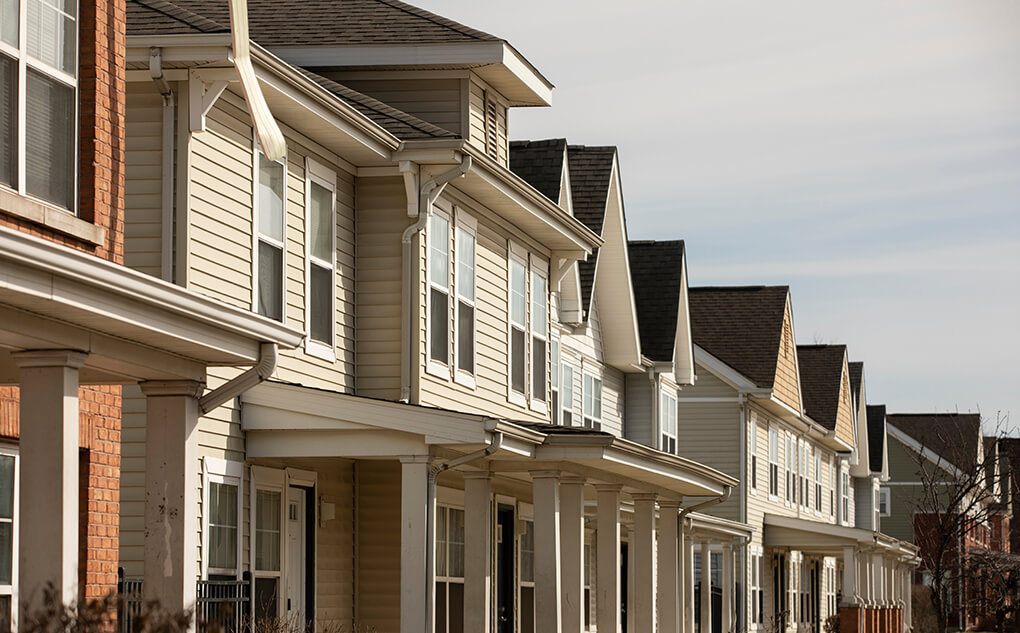Starts and Permits Drop for Both Multifamily and Single-Family

Annualized starts and permits have been slowing for multifamily units for almost two years, but the trend has also turned down for single-family development in the past few months.
The seasonally adjusted annual rate (SAAR) for multifamily starts in May fell by 10.3% from April and dropped by almost 52% from May 2023 to 278,000 units as increased interest rates and a tighter lending environment has put the brakes on the once surging development cycle. Likewise, the precursor building permit totals for multifamily declined 6.1% from April’s SAAR and 31.4% from last May to 382,000 units.
The number of multifamily units under construction slipped 1.5% from April to 898,000 units in May and were down 8.6% from a year earlier. Additionally, the number of multifamily units authorized but not started were up 1.6% to 129,000 units in May but were down 7.9% from one year ago.
Meanwhile, single-family starts (which had been increasing steadily since the end of 2022) were down 5.2% from last month and down 1.7% from last year to 982,000 units, the first drop below one million units since last October. The annualized rate for single-family permitting also declined for the month (-2.9%) but were 3.4% higher than last May.
Single-family completions were down 8.5% for the month of May but up slightly (2%) year-over-year to 1.027 million units. The number of single-family units under construction declined 0.6% from April to 679,000 units in May and were down 2% from a year earlier. Single-family units authorized but not started were down 0.7% for the month, but up 2.9% for the year at 140,000 units.
Together with the small 2- to 4-unit figures, total residential permitting fell 3.8% from last month and were down 9.5% for the year to 1.386 million units. May’s large decrease in annual multifamily starts brought the SAAR of total residential starts down 5.5% from April to 1.277 million units in May and they were down 19.3% from May 2023.
Compared to one year ago, the annual rate for multifamily permitting decreased in all of the Census regions, and by significant percentages. The largest declines in annualized multifamily permitting occurred in the small Northeast region (down 46.7% to 46,000 units), the West region (down 31.6% to 96,000 units) and in the South region (down 28.3% to 186,000 units). The Midwest region slowed 23.7% to 53,000 units. Compared to the previous month, permitting was up in the West and Midwest and down in the Northeast and South regions.
Multifamily starts decreased more than permits in all Census regions, led by the Midwest (down 72.9% to 33,000 units) and Northeast (down 56.3% to 15,000 units). The West (down 44.2% to 86,000 units) and South (down 45.7% to 145,000 units) were down more moderately. Compared to April’s SAAR, starts were down in the South, Midwest and Northeast and up the West region.
Metro-Level Multifamily Permitting
All the top 10 markets from April’s list returned in May with the first four remaining in order.
New York remained the top multifamily permitting market in the 12-months-ending in May with 27,932 units permitted, down about 9% from a year earlier and down almost 3% from April. Austin returned at #2 with 18,772 units permitted, up about 3% from last year but down almost the same amount from the previous month.
Phoenix remained in the #3 spot, permitting a total of 17,072 units for the year, almost unchanged from April but about 3,200 units less than last May’s annual total. Multifamily permitting continues to slow sharply in Dallas with 13,959 units permitted to remain in the #4 spot, 10,728 units less than a year earlier and 1,496 fewer than April’s total.
Washington, DC jumped three spots to #5 with 12,644 units permitted in the year-ending May, still, that was down 32.1% from last year’s pace. Los Angeles inched up a spot from April to #6, permitting 12,372 units annually as of May, down more than 2,100 units from the year before.
Houston dropped to the #7 spot with 11,725 units permitted, down by more than half from last May and by 11.5% from April. Atlanta slipped two spots to #8, almost matching Houston’s total with 11,704 units permitted and down by almost an equal amount from last year as well.
Tampa and Miami returned to the #9 and #10 spots again this month, permitting 10,616 units and 10,251 units, respectively. Both were up 8% to 9% from April, but Tampa declined 22.4% from last May while Miami increased 8.2% year-over-year.
All but two of the top 10 multifamily permitting markets decreased their annual totals from the year before and some were pretty significant declines. Houston had the largest decrease in annual multifamily permitting of the top 10 (-16,190 units), followed by Dallas (-10,728 units), Atlanta (-10,527 units), Washington, DC (-5,974 units), Phoenix (-3,210 units) and Tampa (-3,066 units). New York and Los Angeles had significant declines in multifamily permitting as well. Miami and Austin had modest increases.
Other major non-top 10 markets with significant declines in annual permitting include San Antonio (-8,891 units), Portland, OR (-5,695 units), Raleigh/Durham (-5,401 units), Seattle (-4,995 units), Minneapolis/St. Paul (-4,983 units), Denver (-4,774 units) and Jacksonville (-3,976 units).
Major markets with significant year-over-year increases in annual multifamily permitting in the year-ending May were San Diego (+3,506 units), Greensboro/Winston-Salem (+2,730 units), Knoxville, TN (+1,630 units), Ashville, NC (+1,316 units), San Jose (+1,223 units), and Louisville/Jefferson County, KY (+1,150 units).
The annual total of multifamily permits issued in the top 10 metros during May – 147,047 – was about 27% less than the 200,351 permits issued a year earlier and down about 3% from the previous month. The total number of permits issued in the top 10 metros was almost equal to the number of permits issued for the #11 through #34 ranked metros.
Below the metro level, all of April’s top 10 permit-issuing places returned to May’s list with the first four and last three remaining in the same place. The list of top individual permitting places (cities, towns, boroughs, and unincorporated counties) generally include the principal city of some of the most active metro areas.
In the year-ending May, the city of Austin remained in the #1 position with 9,368 units permitted, about 8% less than in April. The city of Los Angeles returned to the #2 spot in May with 8,859 units permitted annually, 446 less than the previous month. The city of Phoenix stayed in the #3 spot with 7,229 units permitted, 309 units less than in April, while the borough of Brooklyn remained in the #4 spot, permitting 6,576 units in the year-ending May.
The city of San Diego moved up one spot to #5 with 5,957 units permitted, 261 units more than April’s annual total. The city-county of Nashville-Davidson also moved up one spot to #6, permitting 5,741 units for the year-ending May, almost even with April’s annual total. The city of Atlanta fell two spots to #7, decreasing 3.3% from April to 5,670 units permitted.
Returning at #8 and #9, Mecklenburg County (Charlotte) permitted 5,653 units for the year and Unincorporated Travis County (Austin) permitted 5,324 units, while the city of Fort Worth rounded out the #10 spot with 5,013 units permitted for the year.
While Texas still accounted for six of the top 20 individual permitting places on May’s list, the cities of Houston and Dallas and Harris County (Houston) have been moving down the list. Meanwhile, the cities of Miami, Seattle, Denver and Cleveland have been moving up. In addition to Texas’ six permitting places among the top 20, Florida, California, North Carolina and New York each had two permitting places on the top 20 list.










